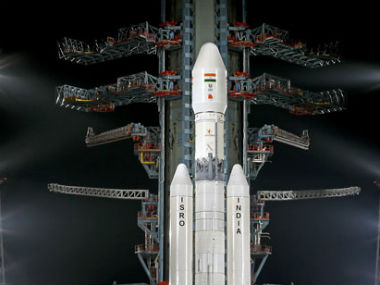Sriharikota (Andhra Pradesh): India moved a step closer to sending its own manned mission to space as well as heavy satellites when it successfully tested a next generation rocket and crew module on Thursday. The country took forward its rocket technology with the successful flight testing of its heaviest next-generation rocket – the Geosynchronous Satellite Launch Vehicle-Mark III (GSLV-Mark III) – and the crew module- in a 20.43 minute mission. “The crew module that splashed in Bay of Bengal has been loaded on to an Indian Coast Guard ship to be brought to Ennore Port, near Chennai,” S.Somanath, project director,GSLV-Mark III told IANS. According to him the crew module is expected to reach Ennore Port Dec 22 where initial inspections and tests will be carried out to assess the heat-bearing aspects of its exterior. Precisely at 9.30 a.m., the 630-tonne rocket, standing 43.43 metre tall, rose from the second launch pad into the sky with a deep-throated roar. [caption id=“attachment_1855371” align=“alignleft” width=“380”]  ISRO’s GSLV Mark III rocket.[/caption] With a thick orange flame at its tail, the expendable rocket ascended with a one-way ticket as its design lifespan was just around five minutes. Prime Minister Narendra Modi and President Pranab Mukherjee congratulated Indian Space Research Organisation on the successful launch. Modi said: “Successful launch of GSLV Mk-III is yet another triumph of brilliance and hard work of our scientists. Congrats to them for the efforts.” The Rs.155 crore space mission had twin purposes. The main purpose was to test the rocket’s atmospheric flight stability with around four tonne luggage. The second and incidental objective was to study the re-entry characteristics of the crew module – called Crew Module Atmospheric Re-entry Experiment - and its aero braking and validation of its end-to-end parachute system. The experiment is part of India’s plans to have a manned mission at a future date. According to an ISRO official, the module will be of the size of a small bedroom and can accommodate two to three people. Just over five minutes into the flight, the rocket spat out the giant cup cake shaped 3.7-tonne crew module at an altitude of 126 km. The crew module then descended towards Earth at a high speed. The speed was moderated remotely manipulating its on-board thrusters till 80 km above the earth. From here the ballistic re-entry into the atmosphere began while the on-board thrusters were shut down. The crew module’s heat shield was expected to experience a heat of over 1,000 degrees Celsius. At an altitude of around 15 km, the module’s apex cover separated and the parachutes were deployed. The module soft crashed in Bay of Bengal near Andaman and Nicobar Islands around 20.43 minutes after the lift-off. From here, the multi-modal and multi-state transport journey of the crew module began. A Coast Guard ship tracking the signals from the module picked up the module and will be delivered at the Ennore Port. From there, it will be brought to Sriharikota in Andhra Pradesh and then it will be taken to the Vikram Sarabhai Space Centre, Thiruvanthapuram. At the mission control centre, ISRO scientists were overjoyed. ISRO chairman K. Radhakrishan said: “India started development of the rocket a decade ago and today completed the first experimental flight. The performance of the solid and the liquid engines were as expected.” “The unmanned crew module splashed in Bay of Bengal as expected,” he added. According to Somanath, the country “now has a new launch vehicle”. “The payload capability of the Indian rocket has been enhanced significantly.” The Thursday mission success is sweet for the Indian space fraternity as it comes after successful launch of Mars Orbiter last year and older version of GSLV rocket powered by its own cryogenic engine early this year. A cryogenic engine is more efficient as it provides more thrust for every kilogram of propellant burnt. This was the second mission of GSLV rocket during the last four years after two such rockets failed in 2010. The GSLV-Mark III is designed to be a three stage/engine rocket with a lift off weight of 630 tonnes. The first stage comprises two identical S-200 large solid boosters with 200 tonne solid propellant, that are strapped on to the second stage, the L110 re-startable liquid stage. The third stage/engine is the cryogenic. For the country, ISRO perfecting the cryogenic engine technology is crucial as foreign exchange can be saved by launching communication satellites by itself. Currently India pays over Rs.500 crore to foreign space agencies to place four-ton communication satellites in orbit. According to Radhakrishnan, the upgraded cryogenic engine is under development and is expected to be realised in two years time. IANS
The country took forward its rocket technology with the successful flight testing of its heaviest next-generation rocket – the Geosynchronous Satellite Launch Vehicle-Mark III (GSLV-Mark III) – and the crew module- in a 20.43 minute mission.
Advertisement
End of Article
Written by FP Archives
see more


)

)
)
)
)
)
)
)
)



